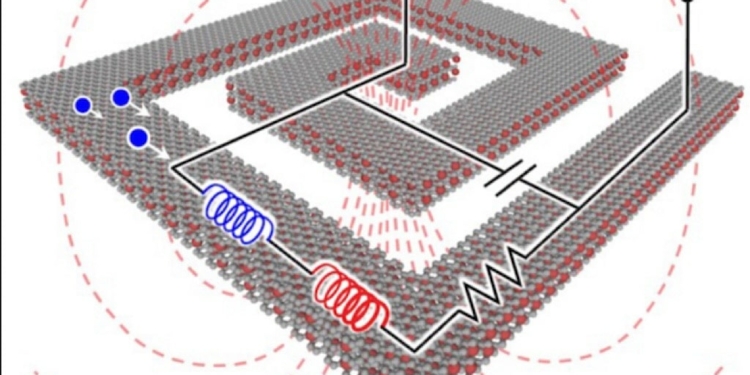Source: Physics World news
Development of the first high-performance inductors from intercalated graphene are shortlisted among the top five contenders from the materials section of Physics World 2018 Breakthrough of the Year.
The final announcement of the Physics World2018 Breakthrough of the Year will be made on Thursday 13 December.
Engineers reinvent the inductor after two centuries
After 200 years of dominating electronics, magnetic-based inductors have a rival that may allow smaller and denser device architectures. Researchers in the US, Japan and China led by Kaustav Banerjee have made the first high-performance inductors from intercalated graphene that work in the 10-50 GHz range, thanks to the mechanism of kinetic inductance.
While magnetic inductance relies on device geometry, kinetic inductance is purely a material property that makes higher inductance densities possible. As well as applications in sensors and energy transfer, inductors are key to the RFICs and RFIDs used in the Internet of Things – which promises to connect us with 50 billion objects by 2020, with a potential impact of $2.7 to 6.2 trillion per year by 2025.
‘Magic-angle graphene’ behaves like a high-temperature superconductor

This first observation that the electronic properties of graphene can be altered by rotating adjacent layers of the material triggered several follow-up revelations within months, in a new development that has been tagged “twistronics” . It started when a team of researchers led by Pablo Jarillo-Herrero of the Massachusetts Institute of Technology (MIT) in the US demonstrated Mott insulator behaviour and high-temperature superconductivity in pristine bilayer graphene when the layers were twisted by a so-called “magic angle”. Later reports include a device that can control the electronic properties of 2D materials by fine-tuning the angle between adjacent layers, rather than applying a field. Doing the twist has also helped to reduce Umklapp scattering, which degrades high-temperature carrier mobility.


































